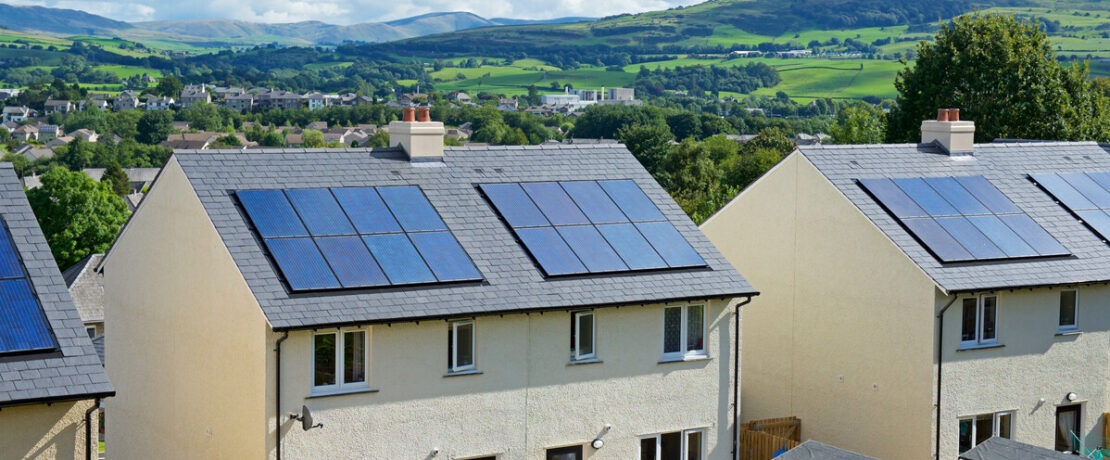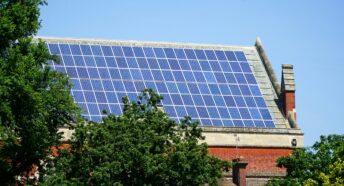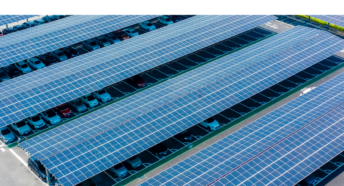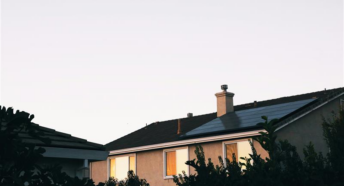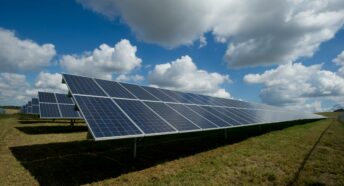How leasehold reform can unlock the potential of rooftop solar
Proposals for solar farms on green fields are now common. Such proposals split local environmentalists between those who want to preserve nature and farming, and those who think the country needs solar energy at all costs. Rooftop solar can help us reach net zero while protecting our countryside, but we need to look at how it could work for renters and landlords.
Property ownership and rooftop solar
There are three sectors of housing ownership in England: freehold, leasehold and rented. Placing solar panels on the roof of a freehold property is, in the most cases, in the control of the owner and therefore fairly straightforward. But in the private rented sector there are few incentives for private landlords to install solar panels as the warmth, comfort and reduced bills don’t benefit them.
Leaseholds are usually blocks of flats with complex legal ownership arrangements. For example, leaseholders don’t usually own the external parts of the building (i.e. the roofs and walls) which is where rooftop solar would be installed. We need to see the government do more to support and encourage both freeholders and private landlords to embrace rooftop solar. This has huge potential to bring about clean energy across England, as estimates show that around 30% of the housing stock in England is either owned by private landlords or a leasehold property.
Cost effective
Estimates obtained by the management company of a block of some 180 south facing flats on the South coast suggested solar power would be very cost effective. The block uses some 90,000 kwh per year for communal lighting, lifts and to pump water. A local solar panel installer estimated that solar panels on the roof could supply all the communal electricity with a cost around £74,000 for the installation – a cost of around £400 to each leaseholder. The payback period would be 16 months and after that the leaseholders could profit from exporting electricity to the grid. The savings/profit over 20yrs would be £1.5m.
Barriers to progress
But, even if an enlightened freeholder wanted to install rooftop solar on their block, they could be met with opposition. As Prof Susan Bright University of Oxford notes, leaseholders can object to the installation of solar panels, even when agreed by the management company or all other leaseholders. On top of this, private landlords are usually unable to pass the cost on to their tenants as this work is often regarded as ‘improvement’ work, which means there’s a lack of incentive to make the move.
On the other end of the scale, leaseholders who wish to install rooftop solar are faced with obtaining the approval of the landlord, in the case above, this was a finance company. But the law is weighted in favour of the landlord. The lease indicates that the landlord can refuse the request without giving a reason, can charge rental for the space and also charge for any expert advice they need from lawyers, engineers, and the like. In addition, as Prof Bright points out the leaseholders may be faced with the inability to pass on the costs through increases in service charges.
How to address the challenges
CPRE is calling for a rooftop solar to account for at least 60% of the solar energy required by 2035. However, the government needs to do much more to support this approach, not least because many warehouses and industrial buildings are leased. Thankfully, leasehold reform is on the agenda again, and here are some ways we can make sure that the power of rooftop solar is fully realised across the sector:
Research
We need to understand just how much potential solar capacity is lost due to the barriers that exist in the rental and leasehold sector. Research which quantifies that – and demonstrates how other countries have encouraged solar power – would help.
New proposals
The National Infrastructure Commission (which informs the government on major infrastructure decisions) should come forward with proposals on how solar can be maximised in the rental and leasehold sectors.
Stronger measures to maximise rooftop solar
The National Adaption Programme (NAP), which sets out how the government can adapt to climate change, should incorporate the following:
- Bring forward regulations to ensure individual leaseholders cannot block or oppose energy efficient improvements to leasehold buildings.
- Incentivise landlords whether they be private landlords or freeholders of leasehold property to install energy efficient measures and penalise those who do not through taxation.
- Introduce measures to ensure that if the majority of leaseholders in the property want solar power then the freeholder cannot unreasonably refuse or exploit it for their own gain.
- Ensure that solar power and other energy savings devices are incorporated into new builds.
The system of access to the cheap electricity through solar power is inequitable, with renters and leaseholders at a considerable disadvantage. But if the government is ready to commit to generating clean and affordable electricity, the potential for harnessing the sun in the UK is also not to be underestimated.
About the author
Susan Kerrison PhD lives in a leasehold property on the South Coast. Last year she took part in one of the Environmental Law Foundation’s ‘law clinics’, which looked at the legal issues around solar in leasehold properties.
A rooftop revolution
CPRE is calling for a rooftop solar revolution to help tackle climate change, the biggest threat to our countryside. By using the roofs of car parks, industrial buildings and warehouses, we can make significant progress towards net zero while protecting our countryside for food, nature and recreation. If you want to help, sign our petition and call on the government to harness the power of rooftop solar.
